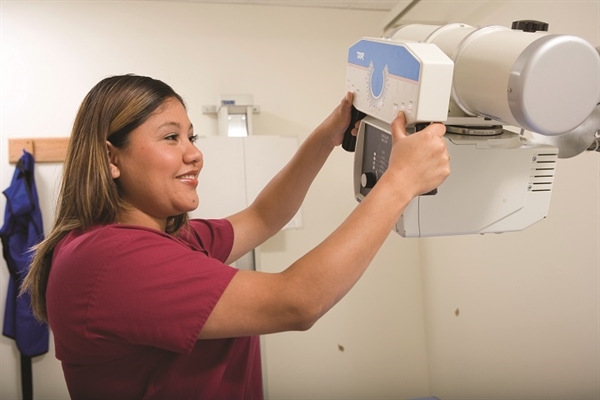Everyone knows that people who work around radiation need to use some kind of radiation protection. Radiation comes in several forms and affects the body differently. The three main principles of protection are shielding, distance and time of exposure.
Shielding
Radiologists prepare a patient for an x-ray by laying a protective apron over them. The technologist then moves to an enclosure or exits the room. There are several other types of protection, all of which have the same basic principle in mind — they all use lead as a barrier between the technologist and the radiation. Lead works great because it absorbs the radiation. Its density stops the radiation, absorbs it and converts it to harmless heat. The heat is then dispersed from the lead lining and the radiation is dissolved in the process.
Shielding itself can be worn as an apron, glasses or hung as drapes, which can be stationary or on a mobile cart.
Distance
The farther away a person is from the source of the radiation, the lesser the amount of radiation is absorbed. In most medical environments, the technician positions himself several feet away from the radiation source. Since high doses are not administered by medical equipment, simple distance, in conjunction with shielding, provides adequate protection for the radiologist. It also ensures that people moving around in other areas of the hospital are not affected.
Time of Exposure
Anyone who has had an x-ray knows that they do not take long; however, radiation does stay in the body. If an x-ray takes 2 seconds to process and the technician takes 30 x-rays a day, that is the equivalent of being exposed for an hour. The reason why this exposure factor is mitigated is because of shielding and distance. Radiation levels are low enough that a technologist could do his job for 20 years and possibly have no side effects, depending on other factors.
According to the American Registry of Radiologic Technologists (ARRT) different organs have variable resistances to radiation. The term "effective dose" is the average dose the human body can absorb as a whole.
There are several new radiation safety improvements under consideration, but the best safety is knowledge. According to Cath Lab Digest, the biggest issue with radiation safety is improper personnel training. They recommend that any and all employees who work around radiation equipment should look at taking a radiation safety course. A combination of proper radiation protection and safety procedures will protect both the employees and patients from harmful outcomes that may arise from radiation exposure.

